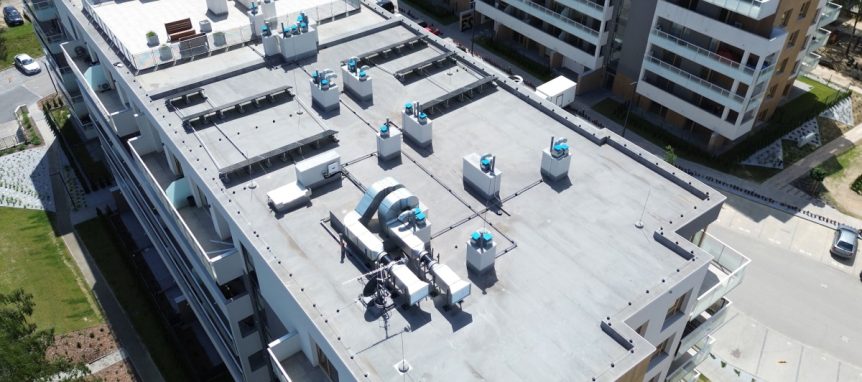While rust is commonly viewed as a mechanical or structural issue, its impact extends far beyond surface corrosion. In commercial buildings—particularly in humid environments like Florida—rust can play a significant role in degrading indoor air quality (IAQ). When metal components inside HVAC systems, ducts, and structural infrastructure begin to corrode, the resulting particles and contaminants can infiltrate the air, posing risks to both health and comfort.
Understanding how rust contributes to IAQ problems is key for building managers and business owners who are committed to maintaining a safe and efficient work environment.
How Rust Affects HVAC Systems and Air Circulation
Commercial HVAC systems are critical to air distribution, temperature control, and humidity regulation. However, these systems are often home to numerous metal components—coils, ductwork, fan housings, and mounting brackets—that are highly susceptible to rust. In Florida’s high-moisture climate, the constant exposure to humidity accelerates oxidation, particularly in systems that aren’t regularly maintained.
As rust develops, tiny particles of iron oxide can flake off and enter the airflow. These particulates are then distributed throughout the building via the ductwork. Over time, this contamination can lead to a decline in air quality, causing unpleasant odors, discoloration of ceiling tiles, and even respiratory irritation in sensitive individuals.
Additionally, rust buildup in HVAC components restricts airflow, reduces system efficiency, and contributes to poor temperature and humidity control—all of which indirectly affect the perceived quality of indoor air.
Health Risks Linked to Airborne Rust Particles
The presence of rust in an HVAC system doesn’t just threaten the equipment—it can also affect occupant health. Iron oxide particles, when airborne, can irritate the eyes, skin, and respiratory system. While generally not toxic in small amounts, chronic exposure—especially in environments with high particulate concentration—can cause discomfort and worsen conditions like asthma or allergies.
Furthermore, corroded HVAC components can harbor and trap moisture, creating ideal conditions for mold and bacterial growth. When these biological contaminants are introduced into a rust-damaged air system, the risk of “sick building syndrome” increases—characterized by headaches, fatigue, and respiratory symptoms among building occupants.
Common Areas Where Rust Compromises IAQ
Rust-related air quality problems often originate in places that are hard to see and easy to overlook. These include:
- Inside Air Ducts: Ductwork lined with rust can break down internally and send particulates into offices, retail areas, or classrooms.
- Coils and Heat Exchangers: Rust on these components reduces heat transfer and can introduce contaminants directly into conditioned air.
- Return Air Plenums: Areas above ceiling tiles that handle airflow can trap condensation and develop corrosion over time.
- Mounting Hardware and Supports: As these degrade, particles drop into duct openings or settle into high-traffic areas, circulating with air movement.
Professional inspection and rust removal services are often required to detect and resolve rust in these hidden locations.
Improving Indoor Air Quality Through Rust Prevention
The good news is that proactive maintenance can prevent rust-related IAQ issues. Businesses that schedule regular HVAC inspections, clean air ducts, and apply protective coatings to vulnerable metal parts can significantly reduce airborne contaminants.
Using corrosion-resistant materials for system upgrades and ensuring proper drainage and ventilation in mechanical rooms also helps minimize future rust formation. In coastal areas, where salt in the air intensifies corrosion, these preventive steps are even more critical.
Partnering with companies like RustyGone ensures rust is removed before it becomes a health hazard. Professional services also help apply long-lasting treatments that protect internal HVAC components from future corrosion, keeping air systems clean, efficient, and safe.
Cleaner Air Starts with Corrosion Control
Indoor air quality is directly linked to the condition of your building’s mechanical systems—and rust is a hidden factor that can quickly compromise both performance and health. By understanding how corrosion affects air systems and addressing it proactively, building managers can protect occupant well-being while extending the life of critical infrastructure.
If your commercial building is showing signs of rust or your HVAC system hasn’t been inspected recently, now is the time to act. RustyGone offers rust inspection, removal, and protection services that support both mechanical efficiency and clean air.

